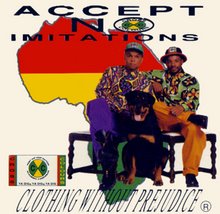HIP HOP & LANGUAGE 
Hip hops affects can be not only been seen in the clothing we wear today but also in the language we use and its meaning. Words like “bling” things ending in “izzle” like “for shizzle” meaning, for sure, and “hur” instead of "here" are becoming a main stay in today’s youth speech. As well, hip hop has the ability to change the meanings of words. Though usually used as a hate word or as a means of insult the “hip hop” community has changed the word “nigger” from a derogatory term to one of endearment. In DMX’s song “My Niggers” he consistently uses the word to describe his friends or one’s that he is close with. “Just cause I love my niggers, I shed blood for my niggers. Let a nigger holla, "Where my niggers?" How DMX has chosen to use the word, like many other rappers, is as a word of endearment or friendship, that his “niggers” are friends, his crew, the one’s he rolls with. DMX is changing the meaning of that word, at least within that community, from a word of hate to a word of friendship. Hip hop can also negatively affect language; a perfect example is the explicit use of the word “bitch” and “hoe” when referring to women. The terms were never viewed in a positive light but hip hop has made them more derogatory, as if almost to say being a “bitch” is a good thing. Hip hop artists commonly refer to women in these terms and it affects the way the youth act towards and treat women. Women are often portrayed as objects in these songs. In Ja Rule’s song “Down Ass Bitch” he says “Every thug needs a lady, and every thug needs a down ass bitch, huh, feel me” Though every individual interprets the song on their own it’s easy to see that in Ja’s view that a “down ass bitch” is a good thing which could lead to youth thinking this is the way they should talk to women.



